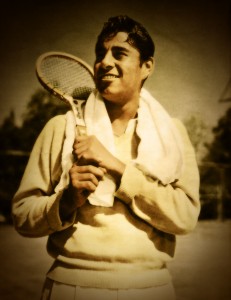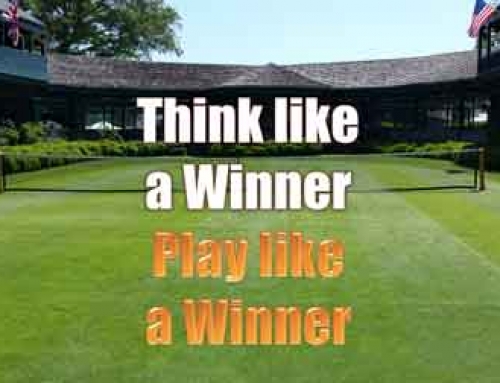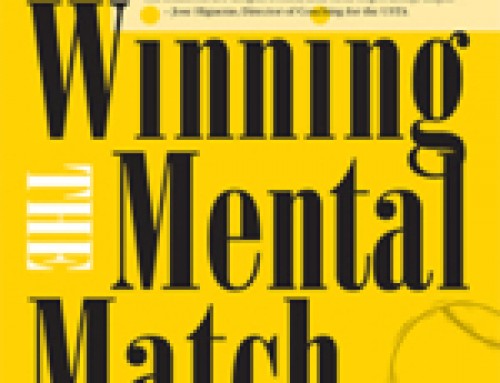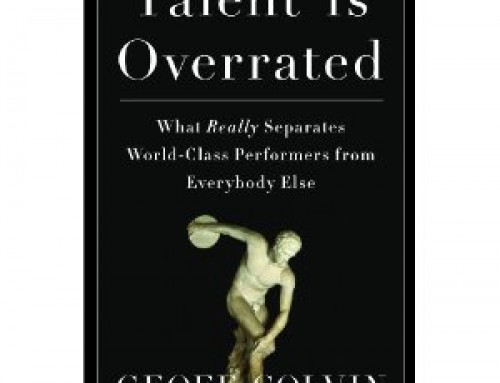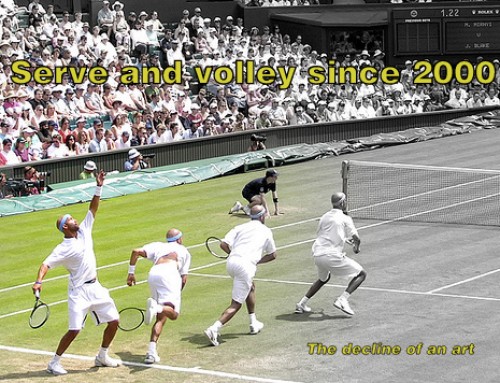Sports Illustrated named Pancho Gonzalez one of the top 20 favorite athletes of the 20th Century. SI said of Pancho, “He could have been the Marlon Brando of tennis…” “If earth was on the line in a tennis match, the man you want serving to save humankind would be Ricardo Alonzo Gonzalez.” He was haughty, overbearing and egotistical, but he was also seductive, charming and had the talent to pull it off. What he did not have was the proper surname and bloodlines in a game which till only recently resembled a feudal system.
Ricardo Alonzo Gonzalez was born in south central Los Angeles, the eldest of 7 children. His parents were Mexican immigrants. Right from the start it was obvious that young Richard was athletically gifted so his mother bought him a tennis racket when he was 12. Banging balls against the wall late into the night, Richard took to tennis with abandon. By age 14, with no formal lessons, he had become the Southern California #1 ranked player in the ’15 and under’ boys division, winning 4 of 5 major boys titles. However, in spite of his prodigal talent, a boy from Beverly Hills who Richard had soundly beaten was selected for the national championships. The Southern California Tennis Association purposely barred Pancho from tennis. Disillusioned, he quit playing tennis, took up poker, pool and petty burglary and ended up in the Preston Prison for boys.
What often separates the successful from the unfortunate is that in the swallow of despair, there is the will to beat back the beast. Pancho, as he was now known, found that instinct and with help from some friends, four years later at the age of nineteen returned to tennis. He defeated his old nemesis from Beverly Hills and fiercely descended on the vaunted east coast tennis circuit. Of course, he was chastised as a “zoot-suiter” and a “pachuco” and despite the fact that he defeated many of the top tennis stars of the day; he had to constantly battle for recognition from the tennis establishment.
In 1948 the Mexican government told him, “come play, and represent us and we will set you up for life.” But Pancho was an American, and even if America would not claim him, he would claim it and in that same year he became the U.S. National Lawn Tennis Champion. It wasn’t until he was 27, that the great Bill Tilden could claim that title. Pancho was only 20.
He went on to several great amateur titles, but Bobby Riggs convinced Pancho to turn professional which meant in those days before “open” tennis, he couldn’t play Wimbledon, the French, Australian, or U.S. Championships, but he could make some money. There was a World Championship in Cleveland which Pancho won 8 times. Over a 10-year period of his championship reign, Pancho turned back the challenge of every #1 amateur challenger of the day. That list included such names as, Rod Laver, Ken Rosewall, Frank Sedgeman, Lew Hoad and Tony Trabert, to name a few.
The great sports writer Dave Anderson has written, “Richard “Pancho” Gonzalez was not only an athlete, he was a showman who thrilled audiences over the years of four decades-the forties, fifties, sixties and into the seventies. With his talent and his emotions, he deserves to be on a pedestal with the most flamboyant sports celebrities-Babe Ruth, Arnold Palmer, Joe Namath, among others. But in his best years as a professional, Gonzalez was prevented from playing in the four major championships: Wimbledon; The U.S. Open; The French Open and The Australian Open. Imagine Joe Namath barred from the Super Bowl, or Babe Ruth from the World Series, or Arnold Palmer from the Masters!” Even tennis legend, Jack Kramer said Pancho could have won as many as 12 Wimbledon championships.
The picture that America saw of this great champion was made-over, sanitized, blonde and blue-eyed. But he was tall, dark, and handsome like an Aztec prince with a Bogart scowl and an eye for trouble. As a grandfather, he was still winning major tennis titles. And even at the age of 42, Pancho was a force to be reckoned with in 5-set matches, defeating the world’s #1 tennis player, and consistently competing and defeating players half his age such as, Arthur Ashe, Stan Smith, John Newcombe, Tony Roach, Jimmy Connors and Bjorn Borg. Pancho Gonzalez holds the record as being the oldest player ever (44 years old) to win an Association of Tennis Professionals (ATP) sanctioned tournament. At the age of 47, he finally retired from professional tennis. For over 25 years Gonzalez was consistently ranked as one of the Top 10 players in the world, a record that stands today.
Pancho Gonzalez passed away at the early age of 67 in 1995 while watching the Wimbledon Championships. In an interview at Wimbledon, Billy Jean King said that Pancho “was the greatest that ever played the game.” Arthur Ashe said he only had one idol in tennis and that was Pancho, because he looked the closest to his color of skin.
As part of our creative team for this first story, we were fortunate to have with us Ralph Gonzalez, who is Pancho’s younger brother. Ralph traveled with Pancho during his illustrious career and chronicled his many successes and failures, both professional and personal. Ralph was the foremost authority on Pancho and created a tremendous archive of films and photographs, which allow us to tell our award-winning documentary on the Life & Times of Pancho Gonzalez.
Documentary Summary: Pancho Gonzalez: The Latino Legend of Tennis tells the compelling story of Richard Alonzo “Pancho” Gonzalez, largely regarded as one of the greatest tennis players in the world. Due to his Mexican background, Gonzalez was not accepted by the elite circles of the tennis establishment, especially in the beginning of his career. Although known throughout the tennis world, Gonzalez played in relative obscurity during his prime since only amateurs were permitted to play in established tournaments until 1968. A year later, and already a grandfather, he played one of Wimbledon’s longest matches against Charlie Pasarell; the match lasted for 112 games, consumed 2 days, and more than 5 hours. Gonzalez was inducted into the Tennis Hall of Fame in 1968, while still an active player. He never had a formal tennis lesson, yet went on to defeat some of the era’s best players including Jimmy Connors, Rod Laver, and Arthur Ashe. The documentary story is told through his brother Ralph and other talking heads including Robert Redford, Edward James Olmos, Andre Agassi, Venus & Serena Williams, Rod Laver, Jimmy Connors & Bud Collins.
For more info on Pancho please log onto http://highergroundentertainment.net/in-the-works/pancho-gonzalez-documentary.html
To buy the DVD as seen on SPIKE TV and PBS please log onto http://highergroundentertainment.net/store/index.html



